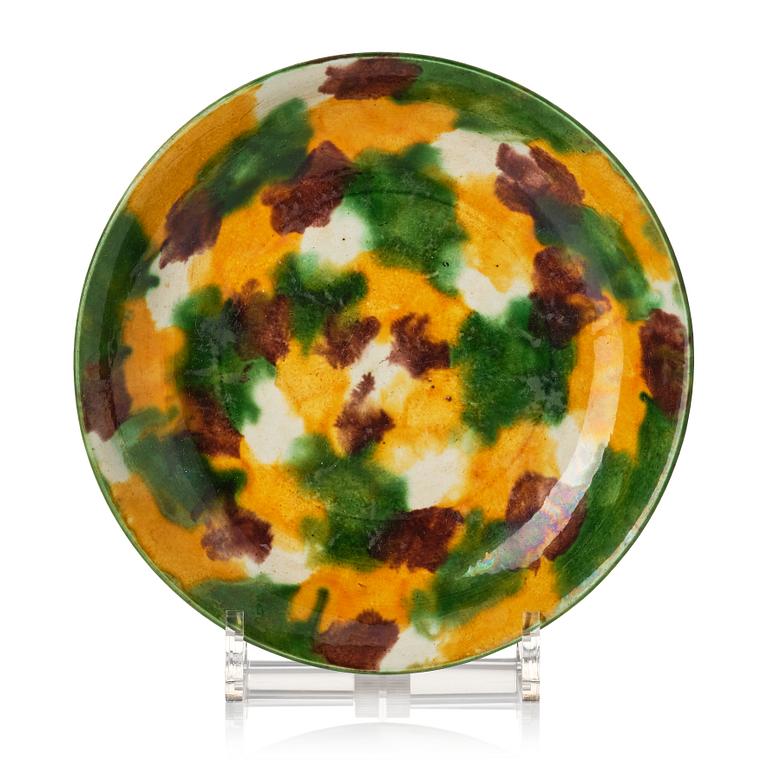An 'egg and spinach' glazed dish, Qing dynasty, Kangxi (1662-1722).
Glazed in aubergine, yellow, green and white glaze. Diameter 20.8 cm.
Wear.
Provenance
From the Collection of Art Director Ivar Björnberg (1934-2021). Growing up at Östermalm, Stockholm Ivar visited gallery viewings, auction viewings and antique shops with his parents and alone. It was during his visits to the antique dealers of Stockholm he became friends with the dealer Victoria Lindström, Grev Turegatan 28, Stockholm (she later moved her gallery to Riddargatan). He started to work extra at the gallery and had her as a mentor when starting his own collection. The collection is a academic one and it shows Mr Björnbergs taste and great passion for the aesthetics of Chinese Works of Art.
Literature
The egg and spinach, or 'susancai' glaze (literally translating to ‘soft three colour’ glaze) is strikingly similar to the sancai glaze developed during the Tang dynasty (618-907), made with lead bases coloured respectively with copper, iron and cobalt oxide. The resemblance between Susancai wares and the earlier Tang ceramic tradition made them very popular during the Kangxi period, as they corresponded with the antiquarian tastes of the Emperor.







































